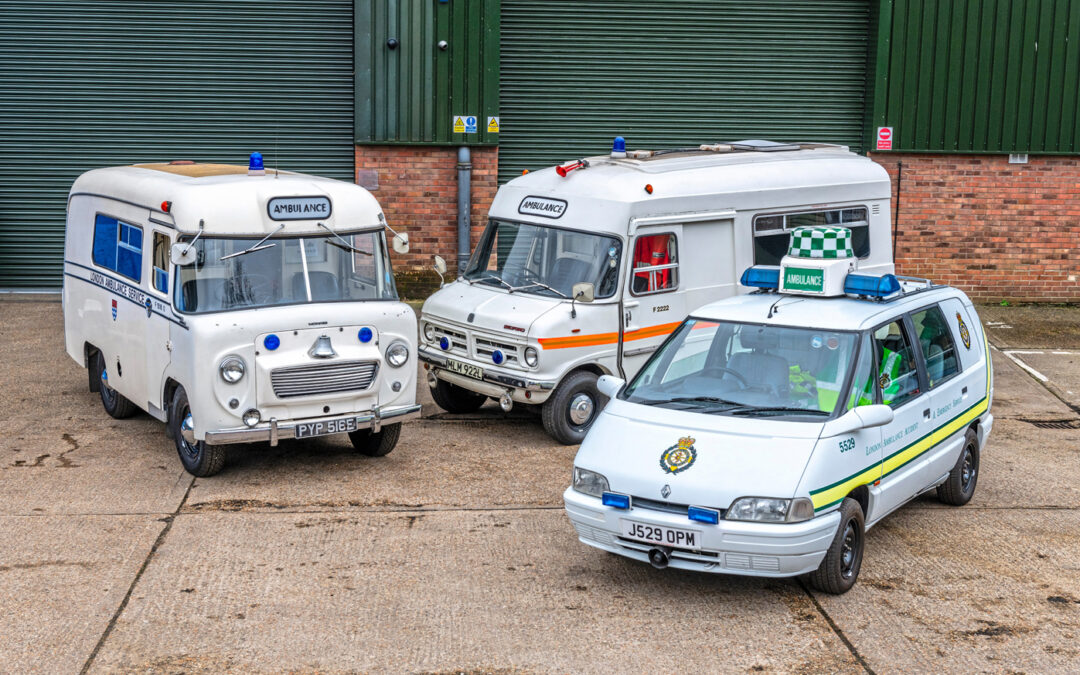Blue Light Heroes: How workhorses were turned into life-savers
As the London Ambulance Service celebrates a brace of milestone anniversaries this year, we get under the skin of the service and try out its historic fleet
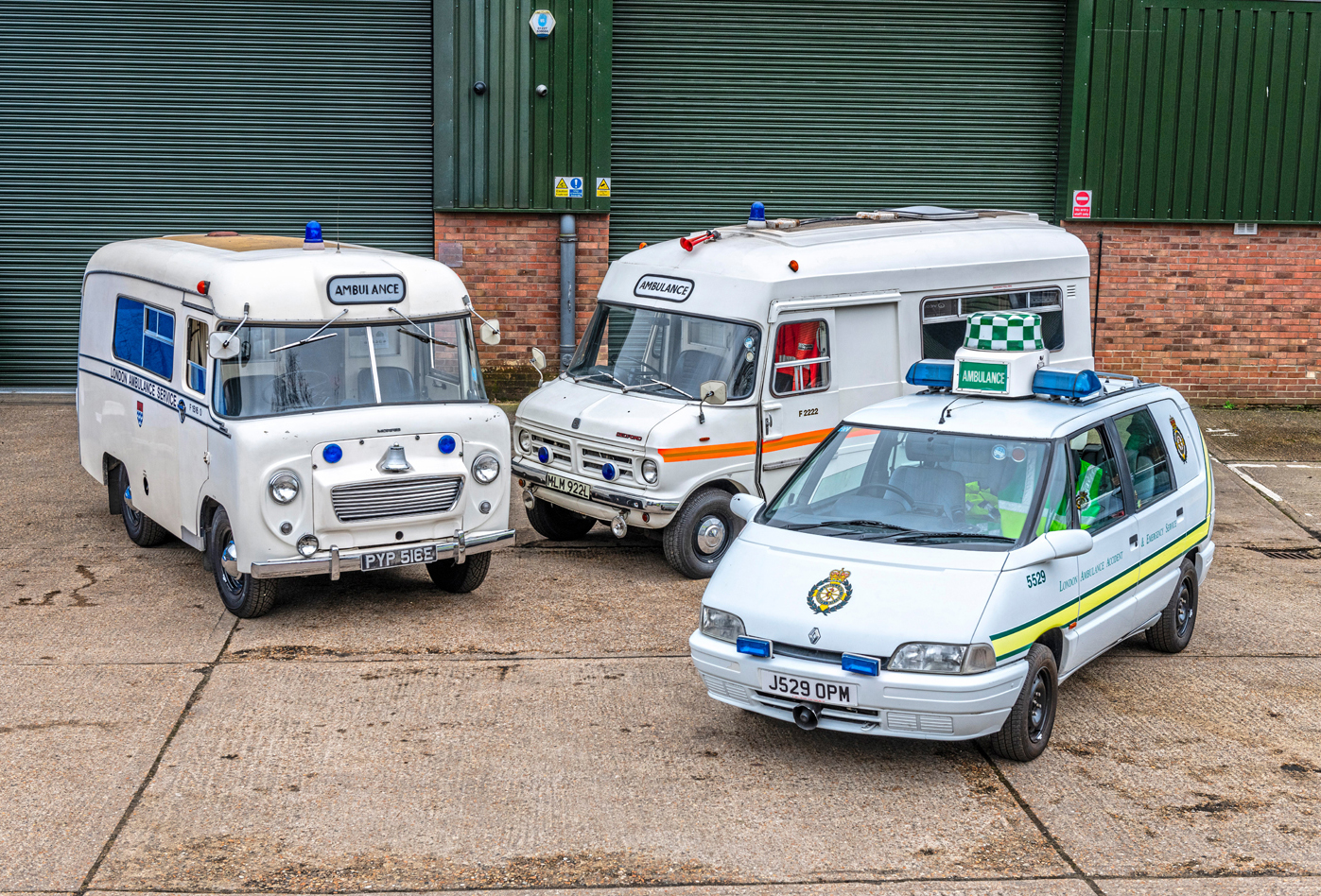
STRETCHERS ON WHEELS
Policing started on foot and the early dawn of the ambulance service in the nation’s capital started in much the same way. Compact stretchers ferried patients to hospitals, carried by two men; a small folding hood could be erected to cover the patient’s head but that was about it. The stretchers were placed strategically about the capital in police phone boxes and public areas. The service was operated largely by the police force at the time.
An article in the British Medical Journal in 1907 wrote about the increasing demand for what it called ‘wheel litters and hand stretchers’, especially around the Charing Cross area. We’ll report this ironically in a motoring title – the Journal entry states the growth in demand for these stems from the growing number of automobile collisions on the city’s streets.
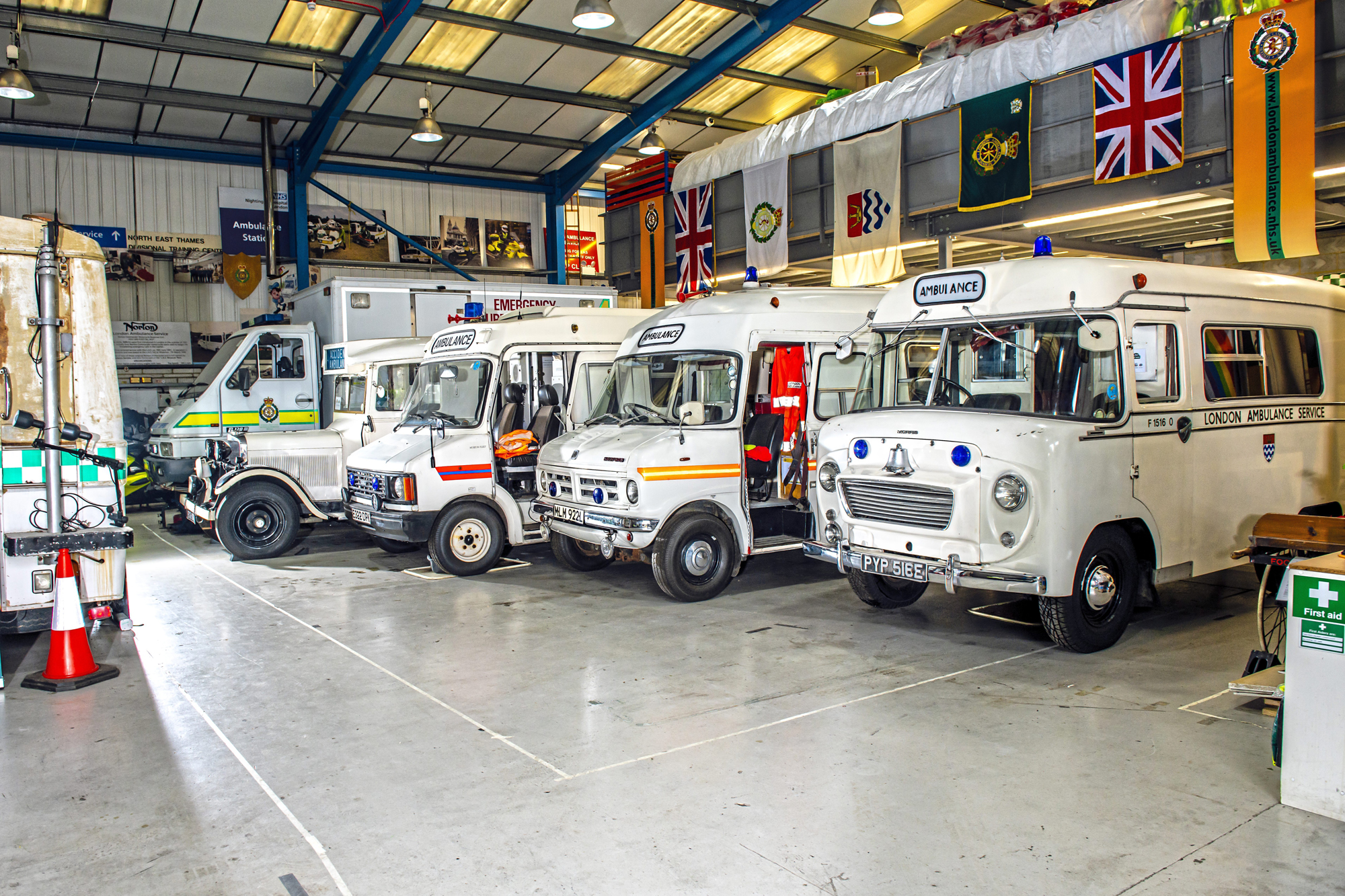
The building containing the London Ambulance Service’s historic fleet (L-R) – 1994 Renault B120 Emergency Equipment Vehicle, 1935 Talbot, 1987 Bedford CF2, 1977 Bedford CF1, 1967 Morris LD.
SPEEDING THINGS UP
Unsurprisingly as the motor car’s prevalence spread, the then-fledgling ambulance service adopted motorised options for patient transport. The London Ambulance Service as we know it today didn’t exist at this point. Patient transport was still run under the Metropolitan Asylums Board who in 1902 introduced a steam ambulance in 1902 and then the first motorised one in 1904, with horse-drawn ambulances phased out by the September of 1912.
Eventually the 1909 Metropolitan Ambulances Act allowed London County Council to establish an emergency ambulance service in 1915. At this point, the service was just a sub-section of the fire brigade. Nonetheless it became the first public body to employ women drivers due to the number of men who’d volunteered or been conscripted to fight in WW1.
By the 1960s, the growth and development of London, especially post-war, saw the service expand again, now alongside the nascent NHS. In 1965, the nine services that operated in the Greater London area were amalgamated into the London Ambulance Service.
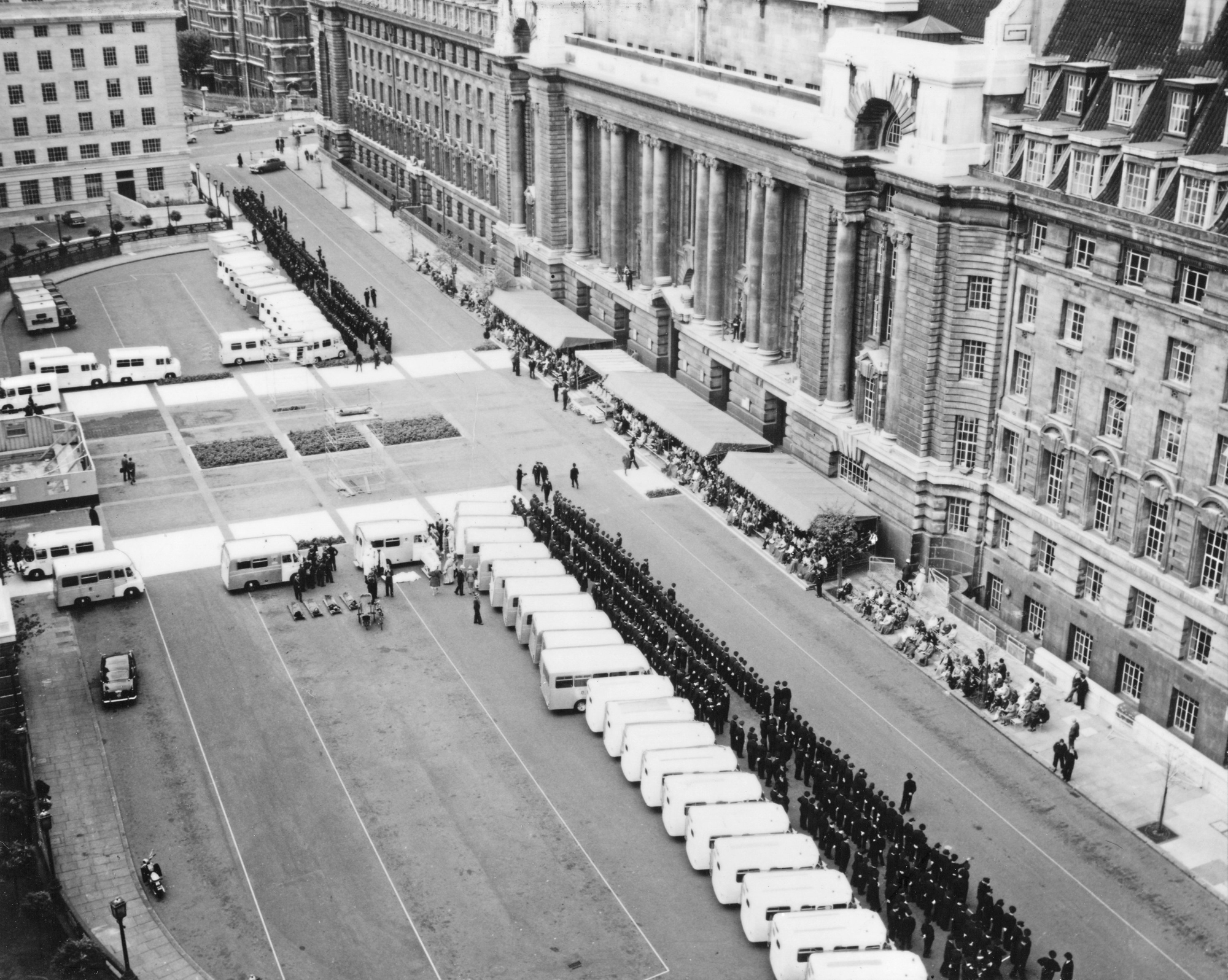
The amalgamation of the nine services in 1965, with the crews and ambulances of the new London Ambulance Service in London.
Ambulance design and use continued to evolve and change over the following decades. Talbots and Daimlers had seen service as patient transport; the London Ambulance Service’s historic fleet houses one of each – a 1935 Talbot and a 1949 Daimler. The Talbot’s spacious rear was able to carry four patients, two stacked on either side, though the original vehicle upon which it was based was never intended to be an ambulance.
The Daimler that follows it historically bears the honour of being one of the first vehicles from a manufacturer who had the London Ambulance Service’s very specific role in mind when designing it. The floorpan was set low in the vehicle and a composite concrete construction in the floor at the rear aided traction in the wet and balanced the whole vehicle down its length.
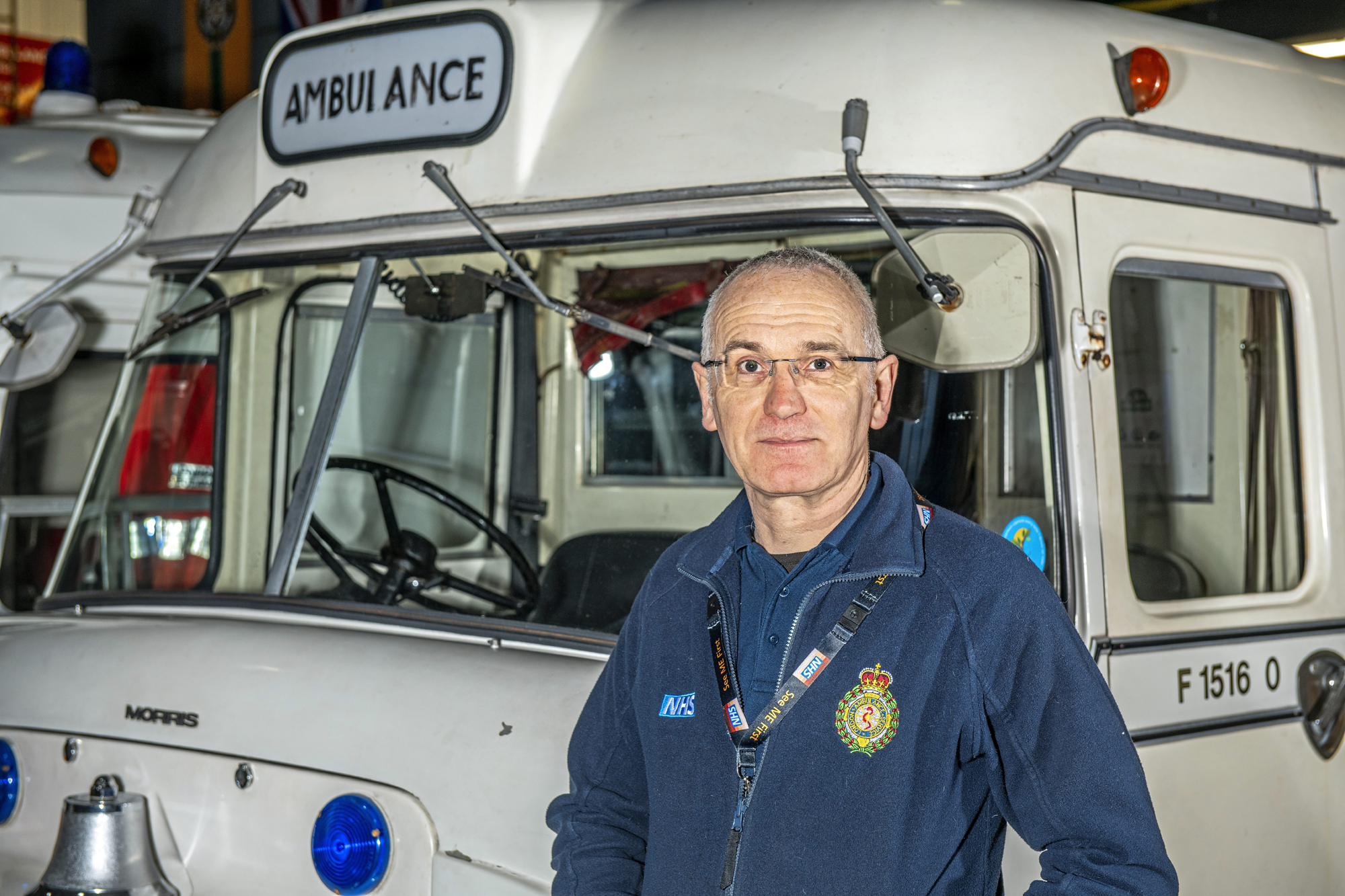
Head of historic collections – and the amazing fleet of classic ambulances – at the London Ambulance Service, Craig Henty.
LAUNCHING LONDON
By the 1960s a shift had been made to more traditional vans like the Morris and LD. Vans remained popular choices for ambulances as the genre evolved. Bedford CFs became prevalent in the fleet with later DAFs and LDVs carrying the torch onwards. By the early 2000s the swap had been made to ‘ambulance marques’ we know today such as Mercedes-Benz and Renault. The van’s ubiquity and practicality remained a key element of the ambulance being easy to drive, control, and maintain. The basic platform was easy to modify to take an ambulance body with the service’s ever-changing demands as kit and personnel loads changed. Gone are the days when an ambulance’s sole role was to simply take you to hospital – now they serve as mobile treatment rooms. No longer were you slung atop a canvas stretcher, hauled into the back of a van and simply rushed to hospital. The ambulance team’s professionalism and role have shifted, too. While current vehicles are easier to pilot, the job is still demanding.
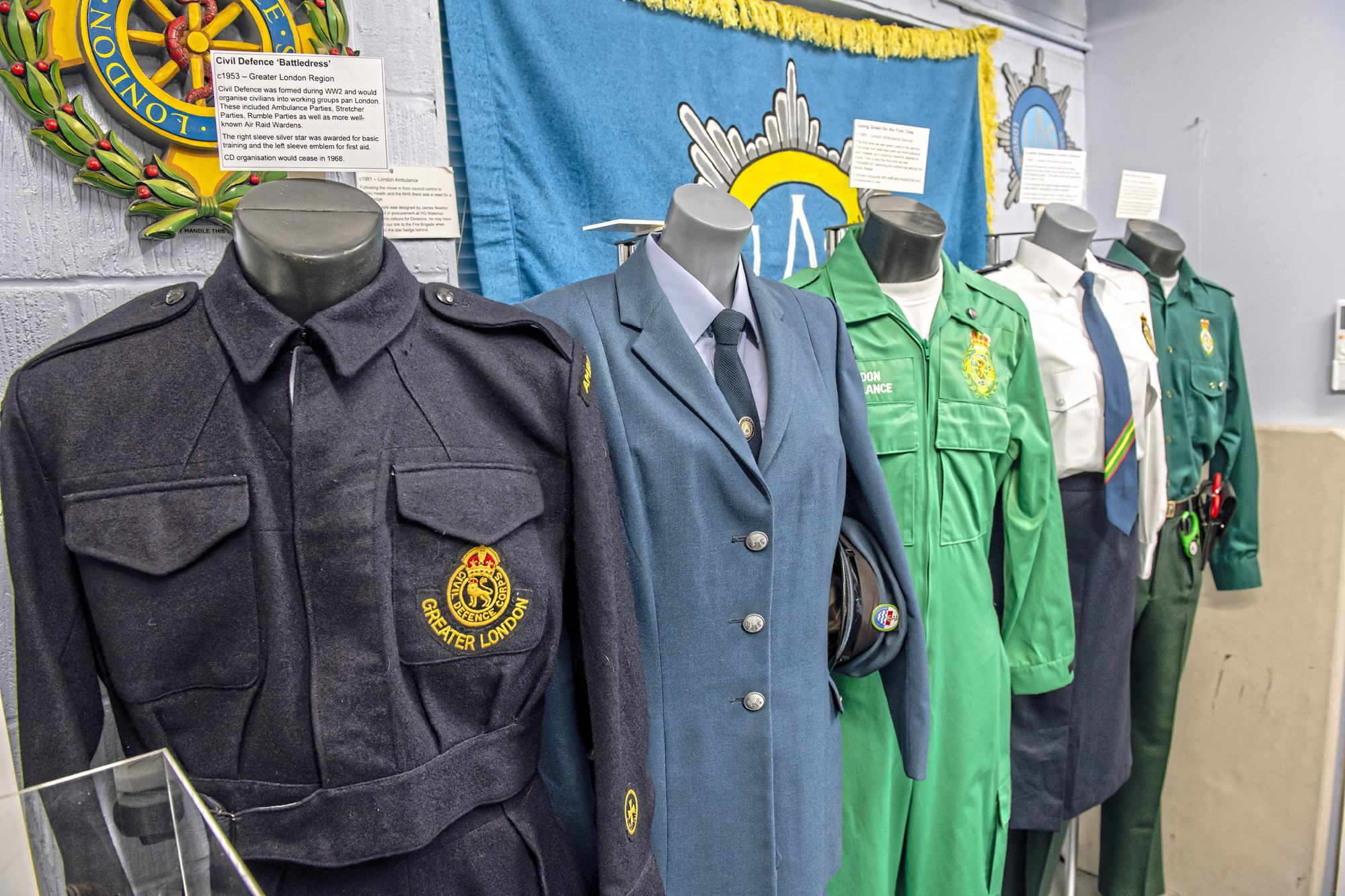
From heavy woollen jackets to a more practical modern outfit, the London Ambulance Service’s evolution is more than just vehicular.

